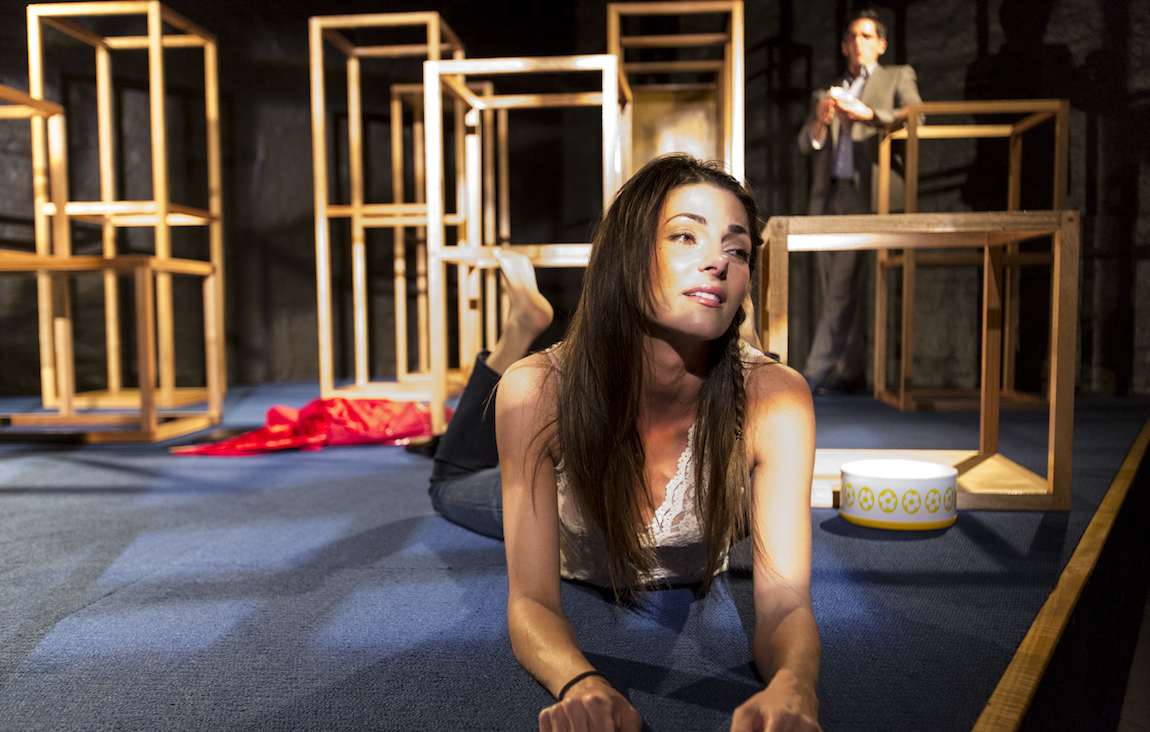The Bull, the Moon and the Coronet of Stars – Griffin Theatre
The fun, funny, intellectual Mills & Boon novel of the theatre world.
Overview
We've all at some point been in a relationship that we thought was epic and world-ending. For Marion (Silvia Colloca) and Michael (Matt Zeremes), it's truer than for most, as the sexual tension between them is manifesting a Minotaur that cloven-footed paces the halls of their workplace. Or a Minotaur is manifesting sexual tension between them. Either way, they can't resist the beast.
He's the married history museum publications officer, and she's the "practically married" artist-in-residence, so their briefly indulged affair is fated to crash and burn. "The king of media releases didn't even leave me a note." Fortunately, The Bull, the Moon and the Coronet of Stars does not end there; this heartbreak is, as in life, only the end of part one. Marion, hair cropped and dress tented, absconds to a determinedly sexless life by the sea, teaching a group of septuagenarian women to draw. And in that place, she finds forgiveness, healing and a surprise romance, via hotel sommelier Mark (Zeremes, transformed by cabana-appropriate costume and oafish manner).
Playwright Van Badham has described her new work as a feminist take on the romcom, and while it is that, the first impression is actually of a fun, funny, intellectual Mills & Boon novel. The actors narrate their characters' journeys through words that are lush, breathy and often pretty sexy. They're not limited to speaking in their characters' voices but have an omniscient voice, which is playfully melodramatic while shot through with wry sagacity. And of course, there's the woven mythology references, of which the wandering Minotaur is only the tip of the iceberg. (I can attest that having zilch classics knowledge is no obstacle at all to enjoying The Bull.)
The second impression given by the play is that this is a beautiful, generous thing to pull from the ruins of a relationship (a trauma Badham attributes as fuel for the piece in her candid writer's note) and to give to others. It's truly heartfelt, and the originality of the telling makes new all the old cliches about time healing wounds, fish being plentiful and opposites having the same effect on humans as magnets. The romcom signposts are well met.
Considering this is a play whose actions are spun by the characters' words, it's great to see it matched by a set (by designer Anna Tregloan) that provides but a foundation for the audience's imagination. Its modular wood frames conjure aisles and cabinets in the museum and bungalows at the beach, as well as casting some evocative shadows from time to time (thanks to complex lighting from Verity Hampson).
Perhaps not since Silent Disco has director Lee Lewis worked with such a malleable script (and perhaps not even then; The Bull has almost no stage directions to heed or twist), and both her creativity and control of the piece shine here. The movement of the actors on stage rarely overwhelms the movement of the characters drawn by their words, and instead the two play nicely off each other, creating extra tension and some memorable imagery.
The Bull, the Moon and the Coronet of Stars is a one-of-a-kind, magic-spinning, very enjoyable night at the theatre. And it ends with one of the best last lines in a play ever.





